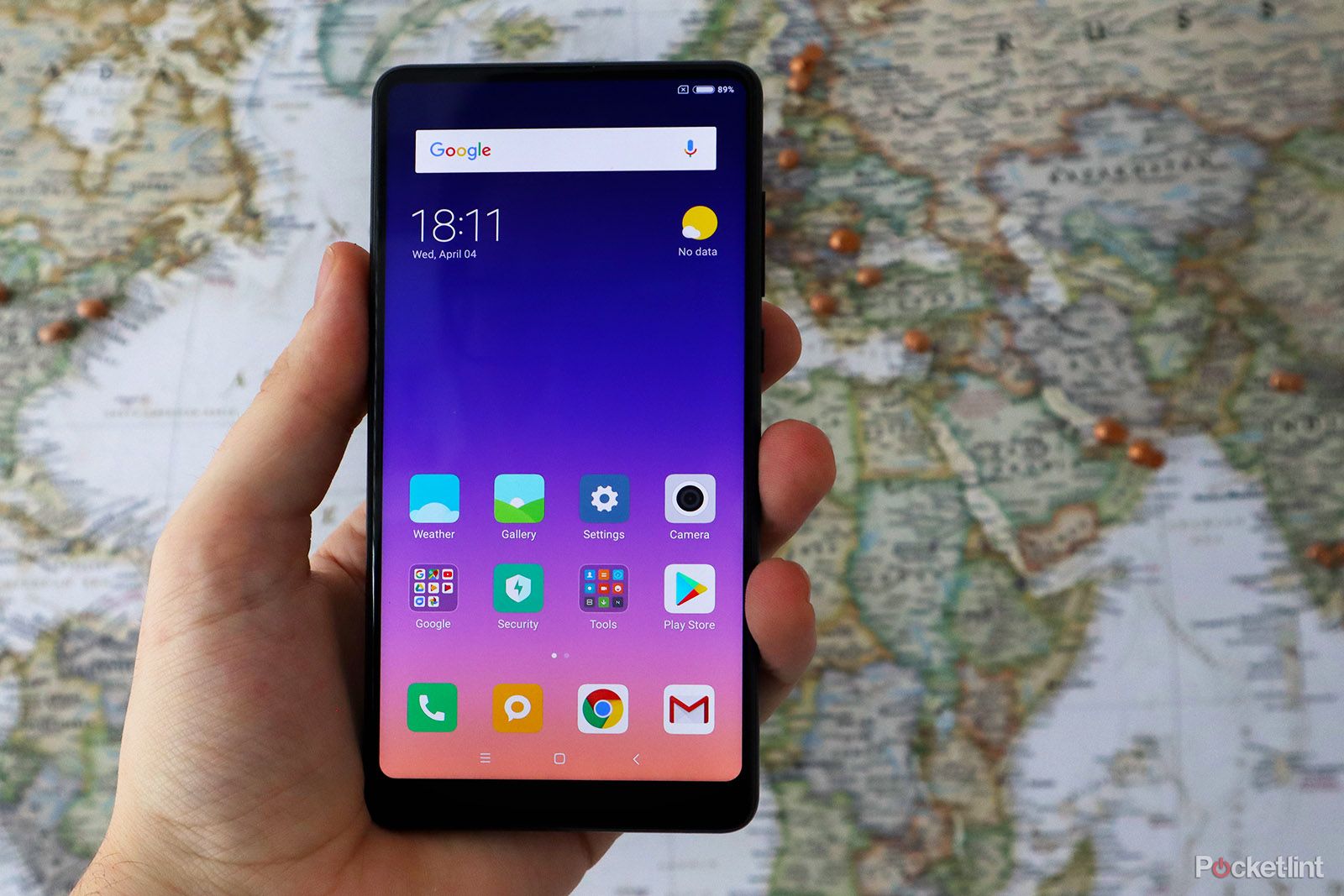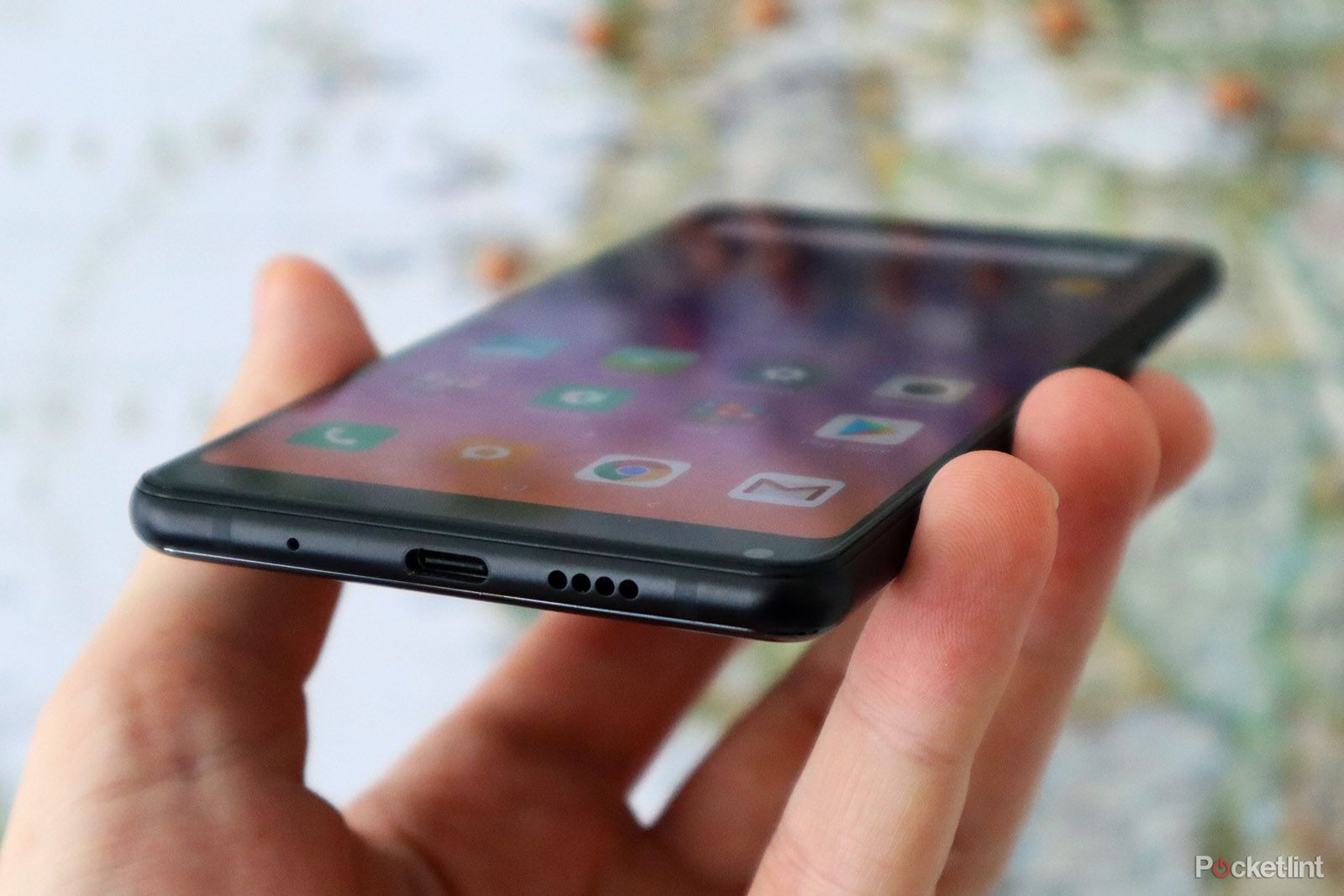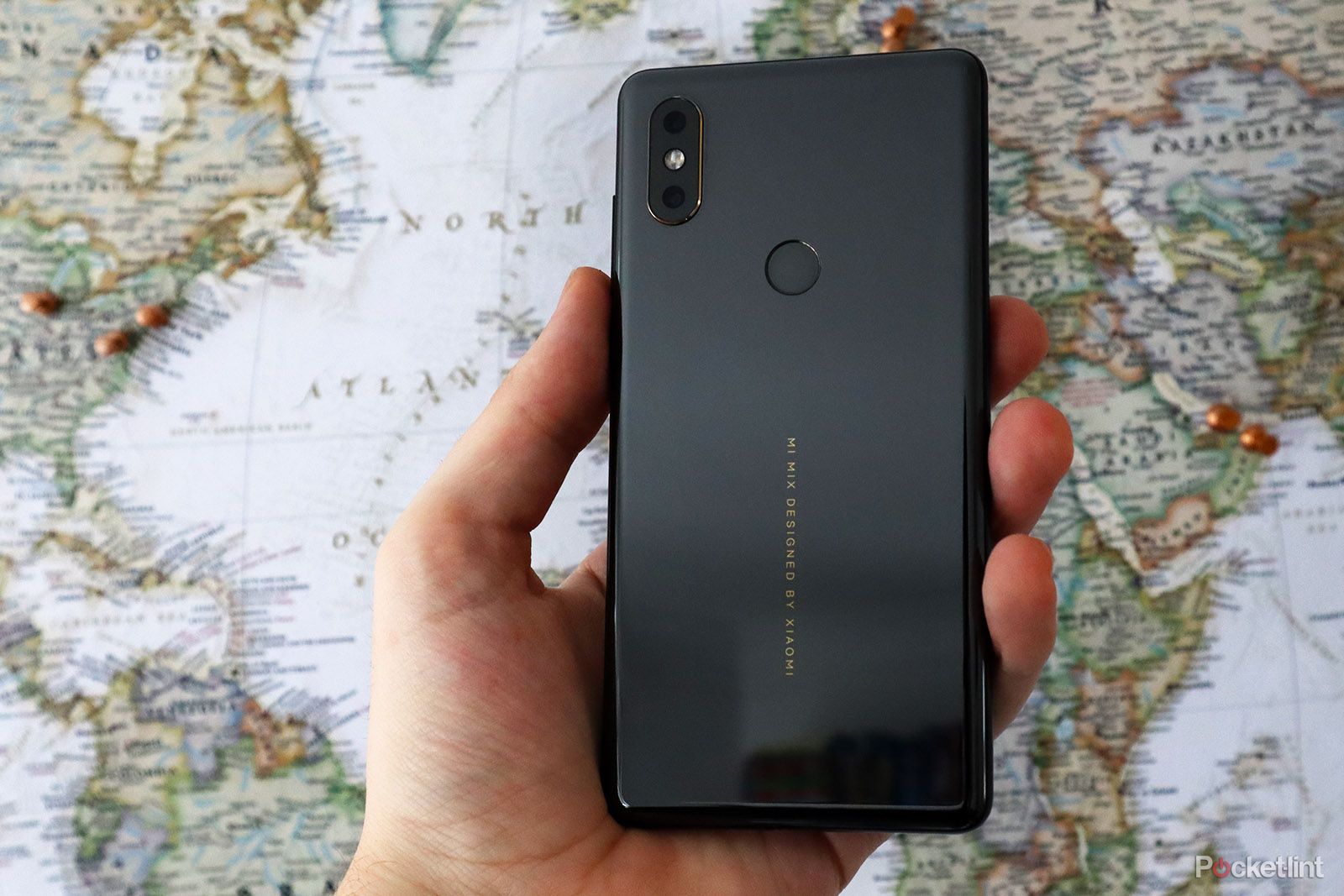All current flagships worth their salt are shrinking screen bezel, looking to make the most display-forward design possible. But it wasn't one of the "big three" that started this trend. It was Xiaomi. Yep, a Chinese brand name you may not have heard much about in the UK (for the simple reason that the company doesn't officially distribute here, yet), is at the forefront of smartphone design.
Our quick take
Overall, the Xiaomi Mi Mix 2S is a phone that's as exciting as it is mystifying. The trim-bezel design and considerable power on board are great to behold for its price, yet the so-so screen and sometimes problematic software are just two of a handful of hurdles to overcome.
At present it's tough to get hold of a Mix 2S in many western markets, which is what makes this phone as enticing as it is off-putting. But just you wait, because Xiaomi is coming, and coming strong.
The Mi Mix 2S is a clear example of just how much can be achieved for half the price of rival flagships, in a great design, full of interesting ideas, but with some compromises to swallow as a result.

Xiaomi Mi Mix 2S - 4.0 / 5
| FOR | AGAINST |
|---|---|
|
|
Xiaomi Mi Mix 2S
In the Mi Mix 2 from 2017, Xiaomi took trim bezel design to the nth degree, delivering a powerful, attractive and affordable phone like no other. Its 2018 follow-up, the Xiaomi Mi Mix 2S, follows a similar footprint, but amps up the internal power and goes all iPhone X in its dual camera approach, too.
Having picked up a handset from the Mi Mix 2S launch event in Shanghai, we've had the phone over in ol' Blighty for a month. Now with its most recent software on board - the very same as consumers will find in purchased handsets - just how well does Xiaomi's latest flagship handle, and what compromises are there to consider?
Trim bezel screen design
- Ceramic unibody design
- 7000 series aluminium frame
- Ultra-trim bezel
- Rear fingerprint scanner
Front-on and the Mi Mix 2S ultimately looks the same as its non-S predecessor. That's to say it looks great, available in either black or white finishes. We prefer the black, with the subtle gold trim around the camera (said to be real 18k gold, because, well, why not?) and "Mi Mix Designed By Xiaomi" printed on the back (which, yes, is total overkill, but at least the font isn't huge).
A 5.99-inch LCD screen is wrapped in a ceramic body with an aluminium frame to the point that there's barely any surrounding bezel on either side, or to the top. There's no notch to be seen anywhere either, leveraging Xiaomi's push in extending as much screen to be used as possible and not going down the iPhone X route. or aping the (rather brilliant) Huawei P20 Pro.
The Mi Mix 2S claims to have an even greater screen-to-body ratio than its predecessor, but we've placed the two handsets side-by-side to take a look and, to our eyes, there's no discernible difference. That's how slight the differences between generations manifest; it's also worth noting just how quickly others have caught up: the Huawei P20 Pro might have a notch up top, but its bezel is otherwise more-or-less identical to the Mi Mix 2S.
The only bezel on the Mi Mix 2S that's larger - y'know, like the size you'd expect on a normal phone - is to the bottom edge, in order to make space for the (badly positioned) front-facing camera. Maybe it should take a leaf out of Vivo's book and make a phone with a pop-up camera mechanism to keep this looking a bit neater. And to reference Huawei again: the P20 Pro has a smaller bottom bezel which includes a fingerprint scanner, just to show off what can be squeezed into there.
On the rear of the Xiaomi is where you'll find the fingerprint scanner, which looks neat and tidy in its circular form, and is well placed given the size of the phone. There was a rumour that the Mi Mix 2S would feature a fancy sensor-behind-glass scanner on the front of the phone to rid the front of almost all bezel, but as we've seen in the Porsche Design Huawei Mate RS, that technology just really isn't up to scratch yet. As is stands, the rear-positioned scanner makes perfectly good sense and works really rapidly.
The one other issue with little bezel is speaker placement. The Mi Mix 2S has a solitary speaker to its base, which is easy to cover by accident, but which also sounds flat and tinny. It's got nothing on many of the current flagship devices, which have been investing in improved sound quality in recent years.
Screen
- 5.99-inch 18:9 aspect ratio LCD screen
- 2160 x 1080 resolution
The first real bone of contention, however, is with the screen. The specs read so well on paper, with its 5.99-inch scale, 18:9 elongated aspect ratio, and FHD+ screen resolution.

So what's the problem? It's not a very punchy panel, a bit like Google Pixel XL 2 suffers. It's not bad, but it's simply not that vibrant, so colours don't pop. The viewing angles are fine, the resolution is perfectly good, too, but having been spoiled by rich blacks and wide-gamut colours from, say, the Apple iPhone X, the Xiaomi doesn't rival the best-of-best screens out there.
This is further compounded by an overzealous auto-brightness adjustment. The screen isn't the very brightest going as it is, but with the software hell-bent on dipping the output to lower levels than necessary almost all of the time, well, it's another stumbling block. We commented that the earlier Mi Mix 2 had auto-brightness issues, so it's a shame they're not fixed here - although you can of course turn off the Automatic Brightness setting to counter any issues.
Performance and software
- Qualcomm Snapdragon 845 platform, 8GB RAM, 256GB storage
- 3400mAh battery capacity, USB-C fast-charging
- Qi wireless charging (mat sold separately)
- MIUI 9.0 software over Android
- 'Xiao AI' voice assistant (China only)
On the performance front, however, the Mi Mix 2S really comes out swinging. With Snapdragon 845 running things - it's the first time this platform has appeared in a Chinese phone - Xiaomi is level pegged with the Samsung S9 on this front. Throw in 8GB RAM and 256GB storage for the top-end model and it all-round impresses.

We've been hurtling through hours of South Park: Phone Destroyer, where animations are slick and loading times are quick as you'd expect from a top-end flagship phone. No problem on the gaming or high-powered apps front, then.
With a 3,400mAh battery capacity (the same as the earlier Mi Mix 2), the 2S has successfully been lasting through a working day for us too. It's not the greatest innings from a phone, but with mixed use, including higher-powered apps, we've been hitting the 15 hour mark per charge. Shows that the auto-brightness adjustment has its worth, we suppose.
Should you need to top-up, recharging can happen in two ways: either fast-charging via USB-C; or not-as-fast-charging using a Qi standard wireless charging mat. Yep, Xiaomi has gone wire-free - and with a 7.5W compatibility, a full recharge takes around three hours. Note that no charging mat is included (just like there isn't with the iPhone X), and the first mat we received didn't work, but that our second sample works perfectly well. And as Xiaomi sells these for 99RMB (around £11) it's really not a bank-breaking extra (how the price will differ outside of China, well, we can only guestimate that it'll be far more).
The bigger issue the Mi Mix 2S faces is its software. Dubbed MIUI (that's Mi User Interface), there will be plenty of fans in the Chinese market - not least because there's a very good Xiao AI voice assistant in the country, which unsurprisingly doesn't do Cockney just yet - but the re-jigging of Google Android and special features aren't something we anticipate western markets desiring. It's the same deal that Huawei suffered for years with its EMUI (Emotion UI) which has taken generations of adjustment to find itself in a more favourable position.
Sometimes it's small things: the camera defaulting to having watermarks (you'll need to menu dig to switch these off); or that all apps being battery managed by default (again, menu dig to customise which apps are unrestricted); or that there's no app tray/drawer. Other times it's the far greater things: MIUI isn't trusted by Google, so despite the phone having NFC for contactless payments, it's not possible to setup Google Pay, AMEX Pay or whatever contactless payment service you'd like to. Which, frankly, is why base Android is just that much better.
Updated cameras
- Dual rear cameras: 12-megapixel, 1.4um pixel size (Sony IMX363 sensor)
- One 'wide-angle' and one 'telephoto' lens (for mock optical zoom and depth measuring)
- AI camera mode with auto scene recognition (for 200+ scenes), Portrait mode, Text mode and more
- Optical Image Stabilisation (OIS)
Flip the phone over and its biggest change can be seen on the rear. In more than a little nod to Apple, the Mi Mix 2S features dual cameras, arranged in the vertical one-above-the-other format.
The reason for two cameras is two fold: the mix of a wide-angle and standard (Xiaomi, like Apple, tries to refer to it as a "telephoto", which is an over-reach) means it's possible to zoom while limiting the overall loss; the two lenses can also use their offset positions from one another to map and identify depth, which can then be used to apply software-produced soft backgrounds, just like you'd typically find in a pro portrait (hence the name "Portrait mode").
Most importantly in the Mi Mix 2S the cameras, at 12-megapixels a piece, have larger pixels compared to many rivals (1.4um, not 1.25um like the older Mi Mix 2). That's in aid of quality, particularly in low-light, plus the manufacturer has included hardware level multi-frame noise reduction and 24 million focusing points on the sensors themselves, to enhance autofocus.
By and large it's a success, too, although Xiaomi really needs to polish things just that touch more to make it a truly great camera. The loading time isn't as instant as on other flagships, for example, while scrolling between modes - Short Video, Video, Photo, Portrait, Square, Panorama, Manual - should free-wheel through the slider to be extra quick (and once when in Manual mode the Panorama interface was showing).
Autofocus, again, is successful - but not the fastest available on the market. A touch on the screen will select focus and metering with ease, but it needs a faster-yet system to rival the best of the best and be truly flagship.
As for the results: the Mi Mix 2S will proclaim how incredible it is via DxO Mark, which, isn't a score system to take too seriously for camera phones in our view. The real thing to look at is how pleasing the shots are: there's ample colour, ample sharpness (without overdoing things) and even night-time shots aren't riddled with image noise. In the same breath, there are artefacts in image which prevent them from being the cleanest results you'll ever see, while even daylight shots have some presence of grain within them.
Interestingly, a software update also released an AI (artificial intelligence) mode on the camera, so it will adjust accordingly to what you're shooting. Sadly, however, this mode doesn't really say much about what it's doing. The other major maker to push this angle is Huawei, but its AI system tells you which mode it's selected based on what it thinks it's looking at, can be over-ridden, and is generally more intelligent. We like the idea of the Mi Mix 2S having such a mode, but want it to be more at the fore when activated.
Xiaomi Mi Mix 2S
To recap
The Xiaomi Mi Mix 2S is a phone that's as exciting as it is mystifying. The trim-bezel design and considerable power on board are great to behold for its price, yet the so-so screen and sometimes problematic software are just two of a handful of hurdles to overcome. Plus it's hard to actually buy one in many western markets.


